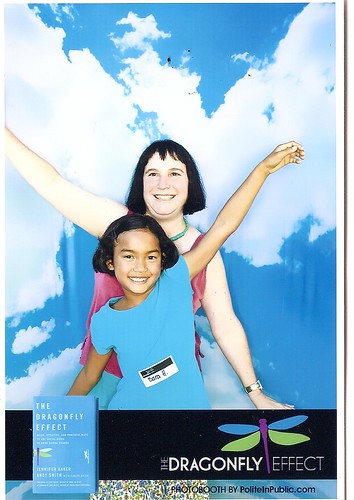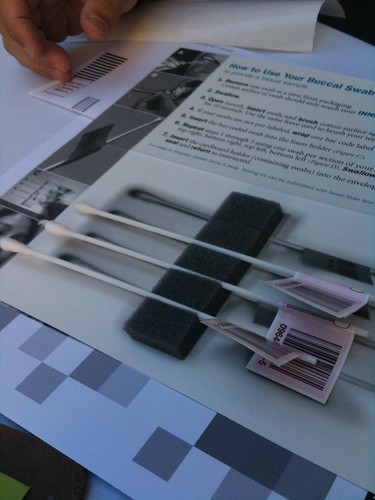
On Sunday, I attended the book launch for the Dragonfly Effect, a book about quick, powerful ways to use social media for social change by Jennifer Aaker and Andy Smith. This book party was different, not because it had kids activities or the fun photo booth (see above), but because it also had a table from Be The Match to encourage people to sign up for the bone marrow registry. Let me explain how all these ideas tie together …

I met Jennifer Aaker about a year ago when she invited me to do a guest lecture in her class, The Power of Social Technology Class, a graduate course, at Stanford Business School. I was honored to be included in the line up of the invited guests, but also to be exposed to many of the concepts and case studies that are in her new book, The Dragonfly Effect. All of which deeply resonated with my own thinking, writing, and doing about small actions for social change.
It was my birthday and the culmination of a campaign to raise money for Cambodian children that I used an action learning project for the students. We actually eat chocolate in class as part of the exercise!
This class focused the question “How to leverage the power of new social technology to effectively create real social good.” The theoretical framework that became the book is, “Dragonfly Effect: Mindset and Method” was geared towards helping students create a project with a clear single, focused goal to cultivate social good. It also helped students learn the process of a rapid prototype experiment that has viral effects, can be measured, and improved with reflection.
Why A Bone Marrow Registry Recruitment At A Book Launch?

The book describes their strategy which underpins the framework for the Dragonfly Effect:
- Stay focused: develop a single goal
- Tell your story
- Act, then think
- Design for collaboration
- Employ empowerment marketing
- Measure one metric
- Try, fail, try again, succeed
- Don’t ask for help require it.
The book describes the simple first step taken by Robert Chatwani, writing an email that focused the challenge, and ended with a clear call to action that was sent to their circle of close friends. The message was magnified with social media, but more importantly joining hands with another money marrow registry campaign for a South Asian man, Vinay Chakravarthy, also recently diagnosed with the disease.

The call to action was simple. You get a cheek swab and—in the event that your bone marrow is a good match for someone in need—spend a few hours at the hospital. Donating bone marrow isn’t as easy as giving blood, but it doesn’t involve a substantial financial or personal risk. It doesn’t require that you change people’s behavior and social practices. It is an act of kindness that can only bring praise.
So, it was no surprise that this book launch also included a bone marrow registry campaign. Jennifer Aaker and Andy Smith also announced their plans to go to India to help establish a bone marrow registry there in December. I filled an application for the registry and got my cheek swabbed – it took ten minutes and I hope you’ll consider it too.
There’s been some interesting buzz generated by the book.
There’s a piece in the New Yorker by Malcolm Gladwell that includes a nice mention for the book and quotes from the author, although it started a debate about the offline-online connection. Here’s some critiques of the piece (not the book) from Jillian C. York and Zeynep Tufkeci (hat tip Jon Garfunkel)
To close the loop, I was given a copy of the book at the party, but also received a second copy of the publisher. So, I’m giving it away. If you want to win this copy, leave a comment that answers any of the following:
The Dragonfly Model is: Focus, Grab Attention, Take Action, and Engage. What campaigns have you seen that use this model?
